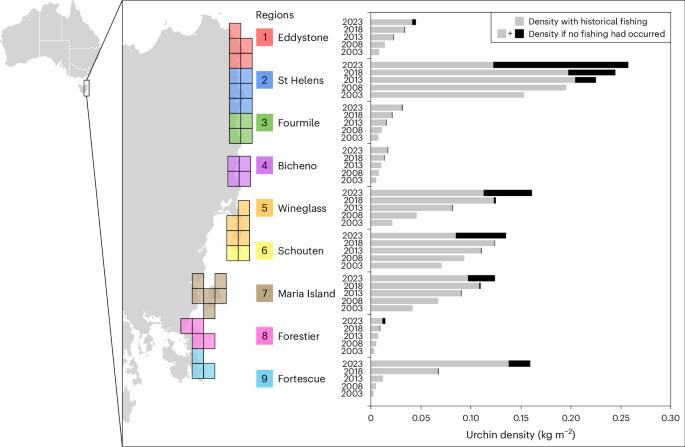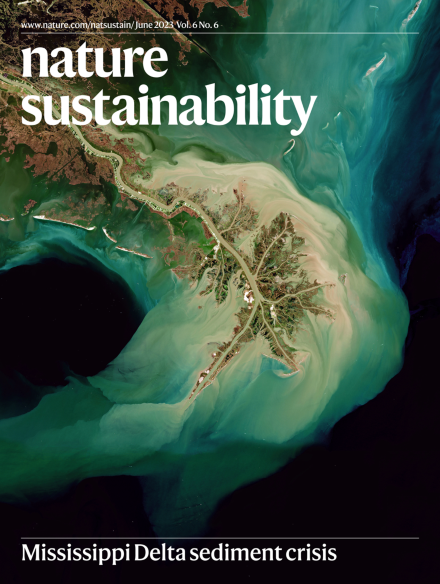当过度捕捞是可持续的选择
IF 27.1
1区 环境科学与生态学
Q1 ENVIRONMENTAL SCIENCES
引用次数: 0
摘要
气候变化正在驱使物种向新的栖息地迁移,有时会造成无法控制的破坏。在这里,我们提出了一个引人注目的情景:政府支持的激励措施推动了以破坏性海胆为目标的商业渔业的建立,故意鼓励过度捕捞以保护海带生态系统。这种生态系统管理战略与可持续过度捕捞的目标是矛盾的。由于不断增加的幼虫流入,在其扩大的范围内消灭海胆是不可能的。因此,管理的重点是将海胆密度维持在一个临界阈值以下,同时确保长期物种控制的可行商业渔业。我们的模型剖析了渔业的影响,在给定经济和空间动态的情况下,提供了控制破坏性范围扩展器的实用策略。除了补贴商业渔业以抵消气候变化的影响之外,我们的研究还探讨了开发与保护之间的冲突,挑战了传统观点,提出了实现可持续发展的切实可行的途径。由于气候引起的洋流变化,长刺海胆已经在塔斯马尼亚沿岸地区定居,形成了威胁海洋物种的贫瘠地区。这项研究表明,政府支持的过度捕捞海胆的策略如何有助于保护和渔业成果。本文章由计算机程序翻译,如有差异,请以英文原文为准。

When overfishing is the sustainable option
Climate change is driving species to colonize new ranges, sometimes causing uncontrollable damage. Here we present a remarkable scenario in which government-supported incentives have driven the establishment of a commercial fishery targeting a destructive urchin, intentionally encouraging overfishing to protect kelp ecosystems. This ecosystem management strategy is paradoxical in the objective to overfish sustainably. Due to consistent and increasing larval influx, the eradication of urchins in their extended range is implausible. Management, therefore, focuses on maintaining urchin density below a critical threshold while ensuring a viable commercial fishery for long-term species control. Our model dissects the fishery’s impact, offering practical strategies for controlling a destructive range extender given economic and spatial dynamics. Beyond the implications of subsidizing a commercial fishery to counteract the impacts of climate change, our study explores the conflict between exploitation and conservation, challenging traditional views and presenting practical pathways to sustainability. The long-spined sea urchin has colonized areas along the Tasmanian coast owing to climate-induced changes in ocean currents, forming barrens that threaten marine species. This study shows how a government-supported strategy of overfishing this sea urchin could help conservation and fisheries outcomes.
求助全文
通过发布文献求助,成功后即可免费获取论文全文。
去求助
来源期刊

Nature Sustainability
Energy-Renewable Energy, Sustainability and the Environment
CiteScore
41.90
自引率
1.10%
发文量
159
期刊介绍:
Nature Sustainability aims to facilitate cross-disciplinary dialogues and bring together research fields that contribute to understanding how we organize our lives in a finite world and the impacts of our actions.
Nature Sustainability will not only publish fundamental research but also significant investigations into policies and solutions for ensuring human well-being now and in the future.Its ultimate goal is to address the greatest challenges of our time.
 求助内容:
求助内容: 应助结果提醒方式:
应助结果提醒方式:


